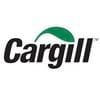Phytase application variations in broiler diets and legislative update
Published: October 12, 2007
Source : JEANNINE HARTER-DENNIS (Courtesy of Alltech Inc.)
During the summer of 1997 the state of Maryland experienced outbreaks of Pfiesteria in several of its rivers and tributaries. These dinoflagellate microorganisms were implicated in several fish kills that closed affected rivers to fishing and tourism. Similar outbreaks were experienced in North Carolina and other eastern coast areas. Although not proven, there was thought to be a link between these outbreaks and nutrient over-enrichment of the soil due to manure application since phosphorus runoff into surface water has been identified as one of the possible causative agents.
The Delmarva Peninsula accounts for the production of over 625 million broilers annually, with an economic value of over $1.6 billion dollars. This results in approximately 53 million pounds of manure nitrogen and 22 million pounds of manure phosphorus. In an effort to reduce both phosphorus and nitrogen pollution in the Delmarva area, the states of Maryland, Delaware and Virginia are in the process of initiating and/or enacting legislation which will regulate poultry waste. The information in Table 1, summarized from the DPI January and February 2000 newsletters, is an update on the information presented at last year’s symposium.
MANDATORY USE OF PHYTASE IN MARYLAND
The state of Maryland has passed legislation requiring the addition of ‘phytase or other additive’ that will reduce the phosphorus content of poultry waste. Simons et al. (1990) reported that 60-80% of the total phosphorus present in many grains, oilseed meals and plant products is bound in the form of phytic acid (myoinositol hexaphosphate).
Since nonruminants contain relatively little intestinal phytase (Nelson, 1967), the phosphorus content of plant source ingredients is considered to be only 30-40% bioavailable. Due to this poor bioavailability of plant source phosphorus, nutritionists are forced to supplement practical feeds with inorganic phosphorus to ensure proper growth and bone development.
It has been demonstrated, however, that the phosphorus in this phytate ring can be released through the action of the phytase enzyme. Typically, phytase has been reported to increase phosphorus bioavailability by 25-50% and reduce phosphorus excretion by 15-40% in grain based diets for swine and poultry (Simons et al., 1990; Edwards, 1991; Broz et al., 1994; Kornegay et al., 1996; Mitchell and Edwards, 1996a;b; Qian et al., 1997). Denbow et al. (1995) has demonstrated a range of 31 to 58% release of phytate phosphorus when phytase was added to soybean meal/cornstarch-based diet.
Table 1 (a) - Click here to see the image
Table 1 (b) - Click here to see the image
APPLICATION OF PHYTASE TO BROILER FEEDS: COEFFICIENT OF VARIATION
The addition of phytase to pelleted broiler feeds presents a unique challenge because of the nature of the product. Since phytase is an enzyme, it is heat labile and is destroyed during the pelleting process. Pelleting temperatures can easily reach 180°F, which would result in denaturation of the functional proteins in the enzyme. Until the development of a heat stable phytase enzyme, it will be necessary to apply current phytase products post-pelleting. Since addition of fat to pelleted broiler diets also requires post-pellet application, spray technologies have been developed and are in place that may be adapted for use with phytase.
Several commercial feed mills on Delmarva have installed spray equipment for the post-pellet application of phytase. There has been concern, however, about the consistency of application of spray liquid application. While the efficacy of phytase has been well established in research trials where incorporation of the enzyme into experimental diets has been carefully ensured, there is little known about the effect of application variations that may exist in commercial mills.
A statistical parameter known as the coefficient of variation (CV) is used as an indicator of variability. The CV is determined by taking a series of samples from the same location at predetermined intervals and analyzing them for the substance of interest, in this case phytase. The CV is then calculated by dividing the standard deviation of all the samples taken by the sample mean and multiplying by 100 to express the value as a percentage (Agricultural Experimentation Design and Analysis, 1978).
The advantage of using the CV as an indicator of variation is that it allows for the comparison of mixing variability regardless of the units of measure. This will allow for the comparison of mixing accuracy of phytase (or other materials) that have different units of measure (i.e., PTUs can be compared to FTUs). The total variability among samples includes variation due to sampling, analytical assay, laboratory technicians, and the actual application of the enzyme. We are interested in the variation of actual application that would be expressed as a ‘corrected CV’. Since this is very difficult to determine, the overall CV is usually reported. Under normal feed mixing of dry ingredients, a CV of 10-15% is usually considered to be in the target range.
Some feed additives, however, such as drugs and vitamins may have CVs in the 20% range. The post-pellet application of phytase may result in even higher CVs due to the nature of the spray application i.e. where a liquid is sprayed on a dry feed traveling past the applicator at a non-uniform rate. The purpose of this research was to determine the possible effects of a high coefficient of variation in phytase consumption. The parameters of interest were growth rate, feed efficiency, bone ash and bone breaking strength as well as serum calcium and phosphorus levels.
EXPERIMENTAL PROCEDURES
Two hundred and twenty four one-day old commercial male broilers were purchased from a commercial hatchery on Delmarva. Birds were vaccinated in ovo for Marek’s disease at 18 days of incubation and spray vaccinated for Infectious Bronchitis and Newcastle disease at one day of age. Birds were wing-banded and randomly allotted to pens after removing any obvious culls. Birds were housed in floor pens with wood shaving/sawdust litter. Temperature and ventilation requirements were similar to commercial conditions.
The experiment consisted of four treatments (Table 2) with eight replicate pens per treatment and seven male broilers per pen. Treatments were blocked by location in the research facility and treatments were randomly assigned within block. The CV of each treatment was calculated based on daily phytase levels in the feed. The CVs associated with treatments 1-3 was calculated to be 0% while that associated with treatment 4 was 103%.

Birds were fed their respective diets from 0-20 days of age. On the 21st day the birds on treatment 4 were allowed to remain on their day 20 feed (diet 2). Feed was not removed prior to termination due to blood sampling. At this time all birds were weighed, bled for serum calcium and phosphorus determinations, humanely sacrificed and the right tibias removed and frozen for analysis of bone breaking strength and bone ash content.
The experimental diets were based on corn and soybean meal supplemented with vitamins and minerals (Table 3). Deflourinated phosphate and limestone were added to the diets as sources of available phosphorus (AP) and calcium (Ca). The test diets were formulated to contain 1.0% Ca and 0.45 or 0.25% AP. All diets contained the NRC-recommended crude protein level of 23% and ME level of 3,200 kcal/kg.
Treatments consisted of a positive control using the NRC recommended level of 0.45% AP, a negative control (0.25% AP) and the 0.25% AP diet supplemented with the Alltech recommended level of 11,500 PTU Allzyme Phytase fed daily or double the recommended level (23,000 PTU) fed on alternate days. Feed and water were offered ad libitum. Data were analyzed using the General Linear Model with treatment and replicate as sources of variation. Duncan’s Multiple Range Test was used to separate treatment means where appropriate.

Bone breaking strength was determined using an Instron machine as shown in Figure 1. All right tibias were thawed, flesh removed manually and tibial caps removed. Once the bones reached room temperature they were placed on the rollers of the Instron. A constant pressure was applied and the bone breaking strength was determined to be the pressure required to break the center of the bone.

RESULTS
As seen in Table 4 and Figures 2 and 3, reducing the available phosphorus content from 0.45% (diet 1) to 0.25% (diet 2) in the corn/soy diets resulted in significant reductions of 37.5% in weight gain (590 vs. 369 g, respectively) and 11.4% in feed efficiency (0.719 vs. 0.637 gain/feed, respectively) (P<0.001).
Average feed consumption was reduced by 28.2% (820 vs. 589 g, respectively, P<0.001) while percent mortality increased from 1.8 to 12.5 (P=0.001). The continuous addition of phytase (diet 3: 11,500 PTU/kg Allzyme Phytase) in the feed resulted in improvements in weight gain (486 g), feed efficiency (0.725) and mortality (0%) when compared to the negative control diet containing 0.25% AP (P<.001).
Similar improvements were observed with birds fed double the recommended level of phytase on an every other day basis (483 g, 0.721, 1.8%). While the improvements in performance in birds fed continuous supplemental phytase were not surprising, the almost equal improvements seen in the birds fed a double dose on alternate days was unexpected.

The bone parameters measured (% bone ash and bone breaking strength) showed a similar patter to the growth data (Table 5, Figures 4 and 5). Birds consuming the negative control diet (0.25% AP) had significant (P<0.001) reductions in bone breaking strength and bone ash content of 72.2% (3.20 vs. 11.51 kg) and 32.9% (34.2% vs. 51.0% respectively), when compared to the positive control diet of 0.45% AP. When 11,500 PTU Allzyme Phytase were added to the feed on a continuous basis, bone breaking strength improved from 3.2 kg to 4.9 kg (53.1%, P<0.001).
However, this improvement was still significantly less than the value for birds fed the 0.45% AP diet (11.5 kg). There was no significant difference in bone breaking strength between birds fed 11,500 PTU Allzyme Phytase daily and those fed 23,000 PTU Allzyme Phytase every other day (4.9 kg vs. 4.5 kg, respectively). While this is difficult to explain, it is consistent with work done by BASF with Natuphos® where they reported no differences in performance or bone parameters with CVs up to 69%.





A similar pattern was seen with bone ash content in birds fed 23,000 PTU Allzyme Phytase every other day when compared to continuous feeding of 11,500 PTU Allzyme Phytase (38.5 vs. 37.2%). As with bone breaking strength, these values were significantly higher than those of birds fed the 0.25% AP diet (34.2%) but were significantly lower than birds fed the 0.45% AP diet (51.0%).
While growth parameters were dramatically improved by adding phytase to a 0.25% AP diet for young broilers, the modest improvements in bone parameters would suggest that older birds, which have greater skeletal demands to support heavier body weights, would have to be monitored more closely to ensure adequate bone development.
The reduction in dietary available phosphorus from 0.45 to 0.25% had no significant effect on serum calcium (7.26 vs. 7.72 mg/dl), but resulted in a dramatic drop (P<0.001) in serum inorganic phosphorus (5.87 vs. 3.15 mg/ dl) (Table 6, Figures 6 and 7). The addition of supplemental phytase, either daily or every other day, to the 0.25% AP diet had no effect on serum calcium (7.84 vs. 7.56 mg/dl) or serum inorganic phosphorus (2.95 vs. 2.93 mg/dl) when compared to the 0.25% AP diet without phytase (7.56 and 3.15 mg/dl, respectively). This would suggest that neither serum calcium nor serum inorganic phosphorus would be a good indicator of phosphorus status in the young broiler.

CONCLUSIONS
The purpose of this experiment was to determine the effects on performance of a wide coefficient of variation of phytase intake resulting from application via post-pellet spray application systems. The results of this trial suggest that coefficients of variation in feed sampling as high as 103% will not adversely affect the use of Allzyme Phytase when used at recommended levels in a post-pellet spray application system. This level of variation is well within the limits of the commercial post-pellet spray application systems in use today by the commercial broiler industry.
It is important that sampling procedures be established which outline when and where samples should be taken from the system (i.e. the same location at regular intervals). It is also important to realize that while a wide range in CV may be tolerated by the bird, it is critical that the total recommended dose be consumed over a period of time. In this trial, the total dose of phytase consumed over a 48 hr period by birds fed a diet containing double the recommended dose every other day was the same as that consumed by the birds given the recommended dose daily.


REFERENCES
Agricultural Experimentation Design and Analysis. 1978. John Wiley & Sons, Inc. Publisher. p18.
Broz, J., Oldale, A.H. Perrin-Voltz, G. Tychen, J. Schulze and C. Simones Nines. 1994. Effects of supplemental phytase on performance and phosphorus utilization in broiler chickens fed a low phosphorus diet without addition of inorganic phosphates. Br. Poult. 35:273-280.
Denbow, D.M., V. Ravindran, E.T. Kornegay, Z. Yi and R.M. Hulet. 1995. Improving phosphorus availability in soybean meal for broilers by supplemental phytase. Poultry Sci. 74:1831-1842.
Edwards, H.M. Jr. 1991. Effects of phytase utilization on monogastric animals. Proc. of the Georgia Nutr. Conf. For Feed Manufacturers, Atlanta, pp.1-6.
Kornegay, E.T., Z. Yi, V. Ravindran and D. Denbow. 1996. Improving phytate phosphorus availability in corn and soybean meal for broilers using microbial phytase and calculation of phosphorus equivalency values for phytase. Poultry Sci. 75:240-249.
Mitchell, R.D. and H.M. Edwards, Jr. 1996a. Effects of phytase and 1,25- dihydroxycholecalciferol on phytate utilization and the quantitative requirement for calcium and phosphorus in young broiler chickens. Poultry Sci. 75:95-110.
Mitchell, R.D. and H.M. Edwards, Jr. 1996b. Additive effects of 1,25- dihydroxycholecalciferol and phytase on phytate phosphorus utilization and related parameters in broiler chickens. Poultry Sci. 75:111-119.
Nelson, T.S. 1967. The hydrolysis of phytate phosphorus by poultry: a review. Poultry Sci. 46:862-871.
Qian, H., E.T. Kornegay and D.M. Denbow. 1997. Utilization of phytate phosphorus and calcium as influenced by microbial phytase, cholecalciferol, and the calcium:total phosphorus ratio in broiler diets. Poultry Sci. 76:37-46.
Simons, P.C., H.A.J. Versteegh, A.W Jongbloed, P.A. Kemme, P. Stump, K.D Bos, M.G.E. Wolters, R. F. Beudeker and G.J. Verschoor. 1990. Improvement of phosphorus availability by microbial phytase in broilers and pigs. Br. J. of Nutr. 64:525-540.
Author: JEANNINE HARTER-DENNIS
University of Maryland-Eastern Shore, Princess Anne, Maryland, USA
Related topics:
Recommend
Comment
Share

17 de octubre de 2007
I've been looking for this for a long time, it came at the right time. At least I now know how binded phosphorus can be released for the birds utilization - i.e. incorporation of the phytase enzyme following the recomended level.
Recommend
Reply

Would you like to discuss another topic? Create a new post to engage with experts in the community.












